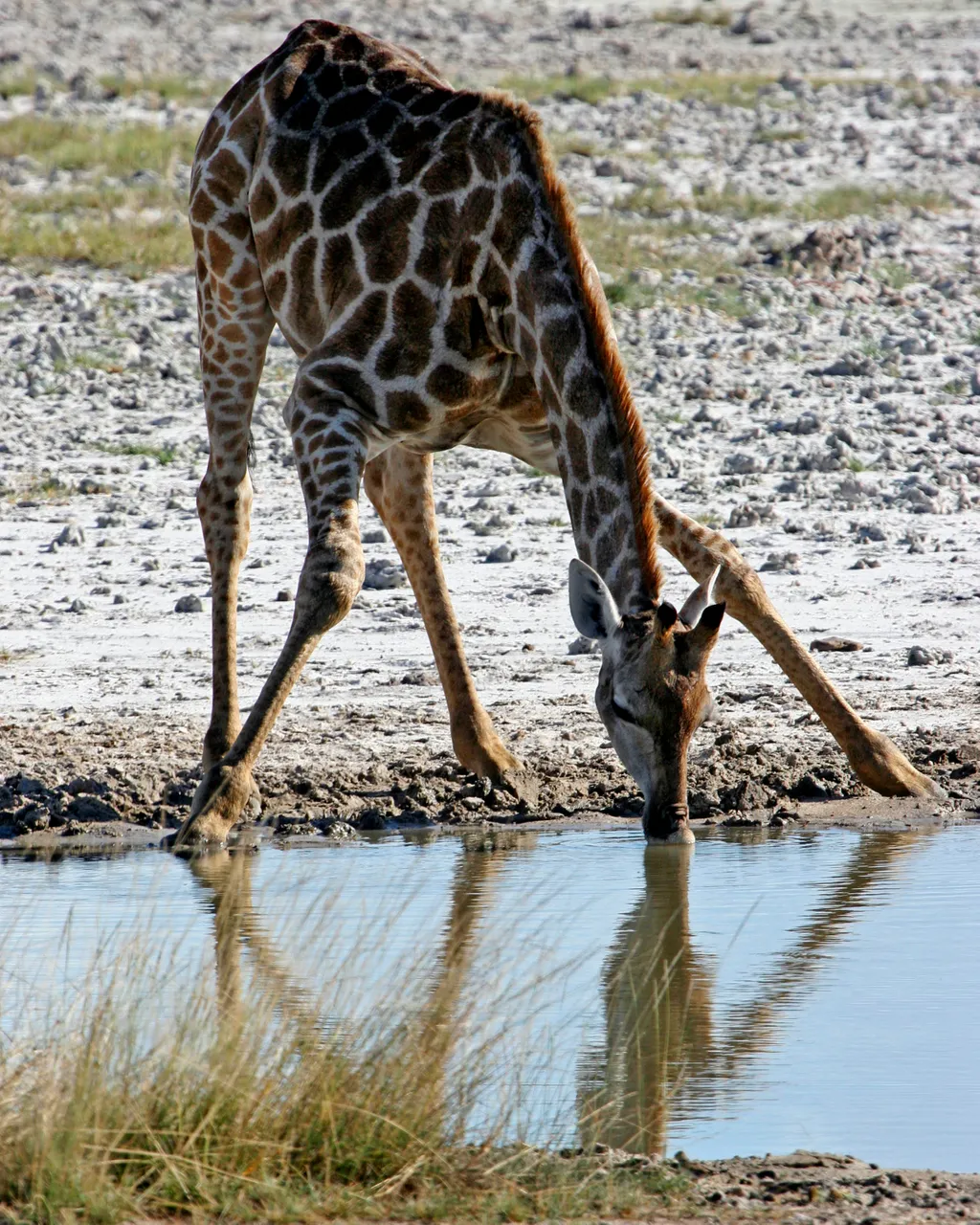Because of their height, giraffes require scarily high blood pressures – yet they escape the massive health problems that plague people with hypertension. How do they do it?
To most people, giraffes are merely adorable, long-necked animals that rank near the top of a zoo visit or a photo-safari bucket list.
But to a cardiovascular physiologist, there's even more to love. Giraffes, it turns out, have solved a problem that kills millions of people every year: high blood pressure. Their solutions, only partly understood by scientists so far, involve pressurised organs, altered heart rhythms, blood storage – and the biological equivalent of support stockings.
Giraffes have sky-high blood pressure because of their sky-high heads that, in adults, rise about 6m (19ft) above the ground – a long, long way for a heart to pump blood against gravity. To have a blood pressure of 110/70 at the brain – about normal for a large mammal – giraffes need a blood pressure at the heart of about 220/180. It doesn't faze the giraffes, but a pressure like that would cause all sorts of problems for people, from heart failure to kidney failure to swollen ankles and legs.
In people, chronic high blood pressure causes a thickening of the heart muscles. The left ventricle of the heart becomes stiffer and less able to fill again after each stroke, leading to a disease known as diastolic heart failure, characterised by fatigue, shortness of breath and reduced ability to exercise. This type of heart failure is responsible for nearly half of the 6.2 million heart failure cases in the US today.

Giraffes maintain extraordinarily high blood pressure, and yet it doesn't seem to cause them health problems (Credit: C. Aalkjær & T. Wang / AR Physiology 2020)
When cardiologist and evolutionary biologist Barbara Natterson-Horowitz of Harvard and UCLA examined giraffes' hearts, she and her student found that their left ventricles did get thicker, but without the stiffening, or fibrosis, that would occur in people. The researchers also found that giraffes have mutations in five genes related to fibrosis. In keeping with that find, other researchers who examined the giraffe genome in 2016 found several giraffe-specific gene variants related to cardiovascular development and maintenance of blood pressure and circulation. And in March 2021, another research group reported giraffe-specific variants in genes involved in fibrosis.
The giraffe has another trick to avoid heart failure: the electrical rhythm of its heart differs from that of other mammals
And the giraffe has another trick to avoid heart failure: the electrical rhythm of its heart differs from that of other mammals. In giraffes, the ventricular-filling phase of the heartbeat is extended, Natterson-Horowitz found. (Neither of her studies has been published yet.) This allows the heart to pump more blood with each stroke, allowing a giraffe to run hard despite its thicker heart muscle. "All you have to do is look at a picture of a fleeing giraffe," Natterson-Horowitz says, "and you realise that the giraffe has solved the problem."
Natterson-Horowitz is now turning her attention to another problem that giraffes seem to have solved: high blood pressure during pregnancy, a condition known as preeclampsia. In people, this can lead to severe complications that include liver damage, kidney failure and detachment of the placenta. Yet giraffes seem to fare just fine. Natterson-Horowitz and her team are hoping to study the placentas of pregnant giraffes to see if they have unique adaptations that allow this.
People who suffer from hypertension are also prone to annoying swelling in their legs and ankles because the high pressure forces water out of blood vessels and into the tissue. But you only have to look at the slender legs of a giraffe to know that they've solved that problem, too. "Why don't we see giraffes with swollen legs? How are they protected against the enormous pressure down there?" asks Christian Aalkjær, a cardiovascular physiologist at Aarhus University in Denmark who wrote about giraffes' adaptations to high blood pressure in the 2021 Annual Review of Physiology.
Giraffes minimise swelling with the same trick that nurses use on their patients: support stockings
In part, at least, giraffes minimise swelling with the same trick that nurses use on their patients: support stockings. In people, these are tight, elastic leggings that compress the leg tissues and prevent fluid from accumulating. Giraffes accomplish the same thing with a tight wrapping of dense connective tissue. Aalkjær's team tested the effect of this by injecting a small amount of saline solution beneath the wrapping into the legs of four giraffes that had been anesthetised for other reasons. Successful injection required much more pressure in the lower leg than a comparable injection in the neck, the team found, indicating that the wrapping helped resist leakage.

One look at the slender legs of the giraffe reveals that they don't suffer the ankle swelling common in humans with high blood pressure (Credit: Getty Images)
Giraffes also have thick-walled arteries near their knees that might act as flow restrictors, Aalkjær and others have found. This could lower the blood pressure in the lower legs, much as a kink in a garden hose causes water pressure to drop beyond the kink. It remains unclear, however, whether giraffes open and close the arteries to regulate lower-leg pressure as needed. "It would be fun to imagine that when the giraffe is standing still out there, it's closing off that sphincter just beneath the knee," says Aalkjær. "But we don't know."
Aalkjær has one more question about these remarkable animals. When a giraffe raises its head after bending down for a drink, blood pressure to the brain should drop precipitately – a more severe version of the dizziness that many people experience when they stand up suddenly. Why don't giraffes faint?
At least part of the answer seems to be that giraffes can buffer these sudden changes in blood pressure. In anesthetised giraffes whose heads could be raised and lowered with ropes and pulleys, Aalkjær has found that blood pools in the big veins of the neck when the head is down. This stores more than a litre (0.2 gallons) of blood, temporarily reducing the amount of blood returning to the heart. With less blood available, the heart generates less pressure with each beat while the head is down. As the head is raised again, the stored blood rushes suddenly back to the heart, which responds with a vigorous, high-pressure stroke that helps pump blood up to the brain.
It's not yet clear whether this is what happens in awake, freely moving animals, though Aalkjær's team has recently recorded blood pressure and flow from sensors implanted in free-moving giraffes and he hopes to have an answer soon.
So – can we learn medical lessons from giraffes? None of the insights have yet yielded a specific clinical therapy. But that doesn't mean they won't, says Natterson-Horowitz. Even though some of the adaptations are probably not relevant for hypertension in humans, they may help biomedical scientists think about the problem in new ways and find novel approaches to this far-too-common disease.
* This article originally appeared in Knowable Magazine, and is republished under a Creative Commons licence.
- scarabou and ghost
-

 2
2



Recommended Comments
There are no comments to display.
Join the conversation
You can post now and register later. If you have an account, sign in now to post with your account.
Note: Your post will require moderator approval before it will be visible.